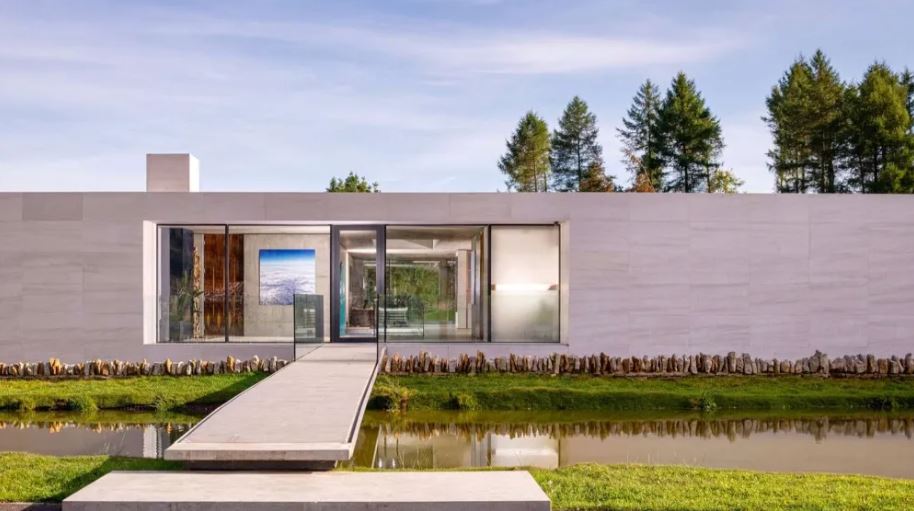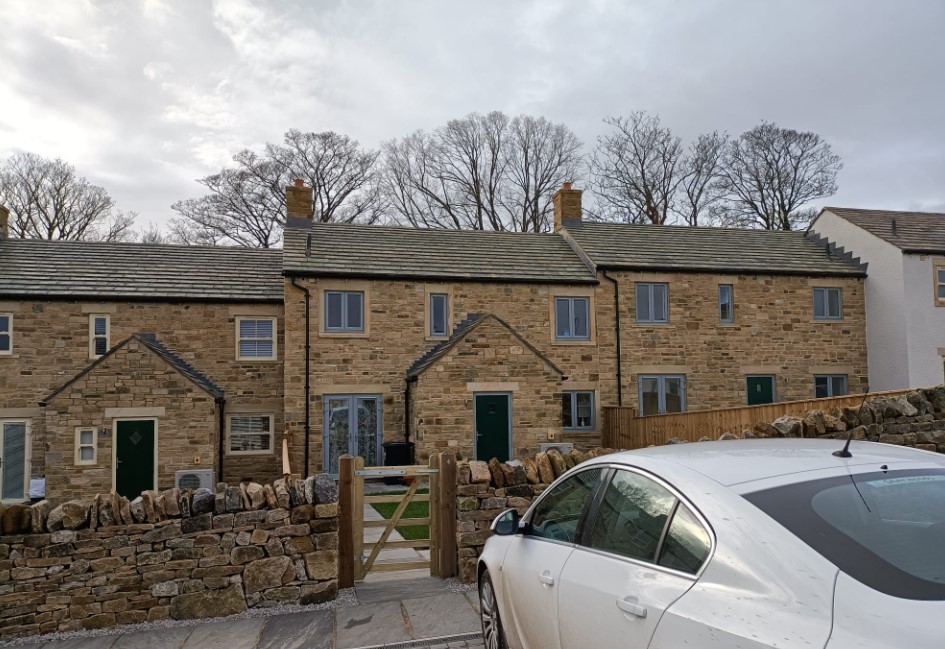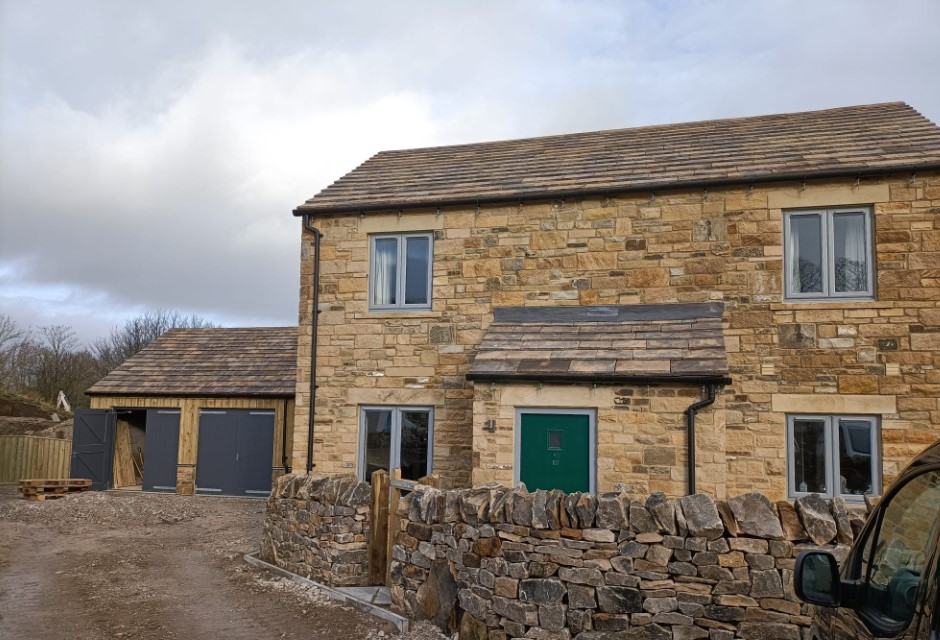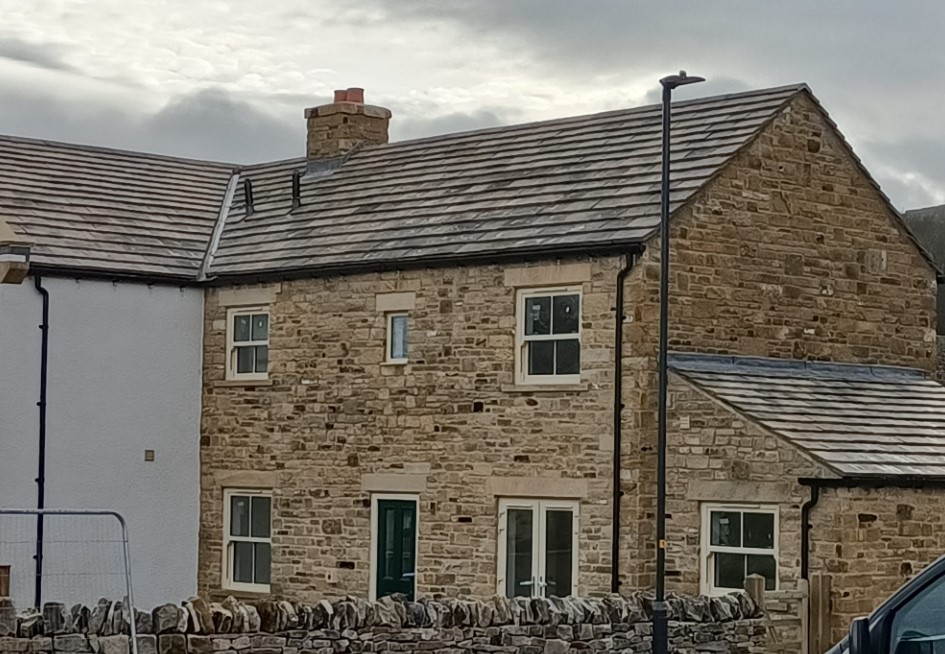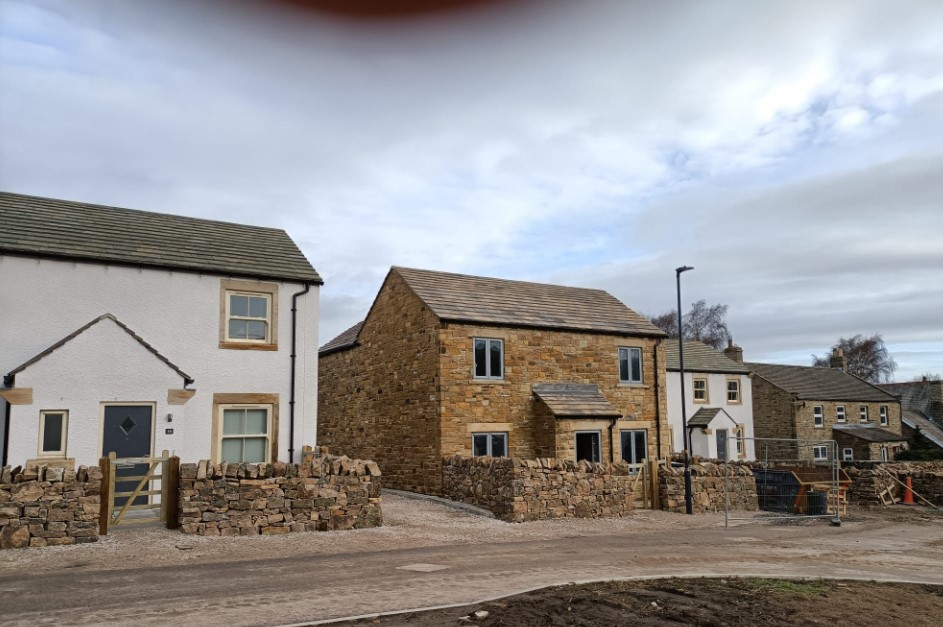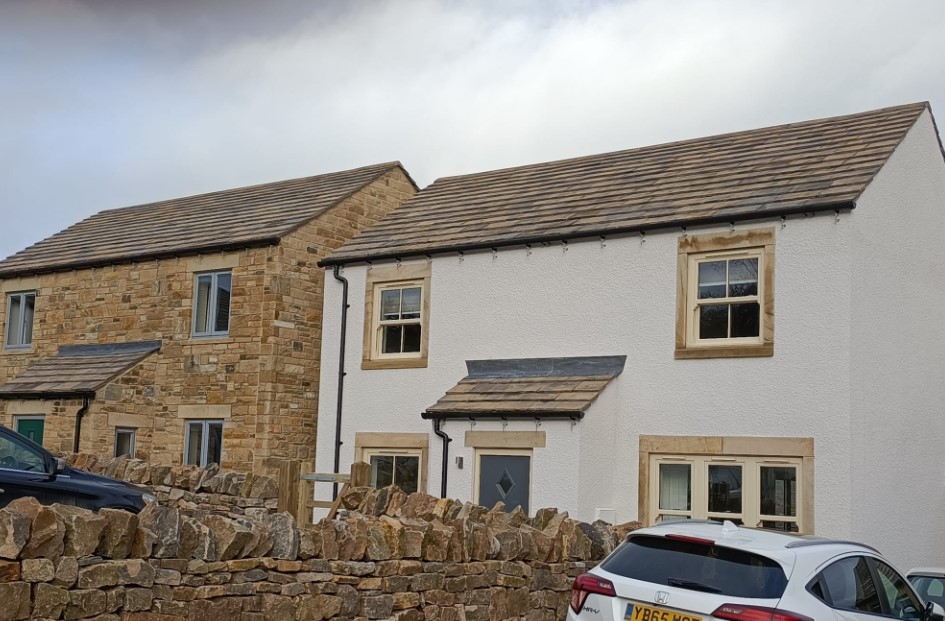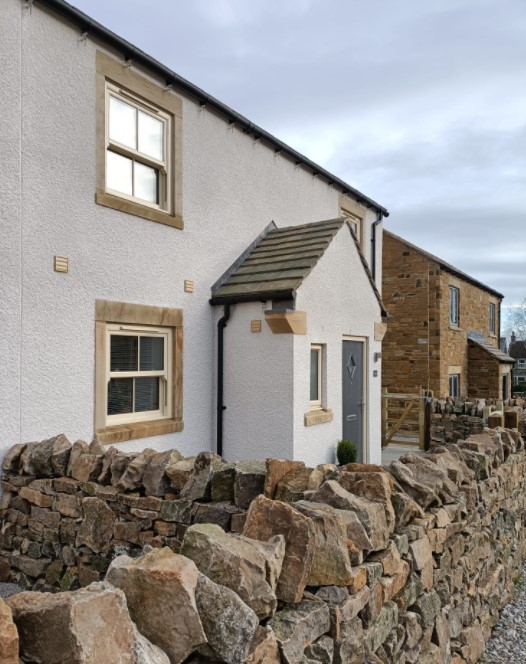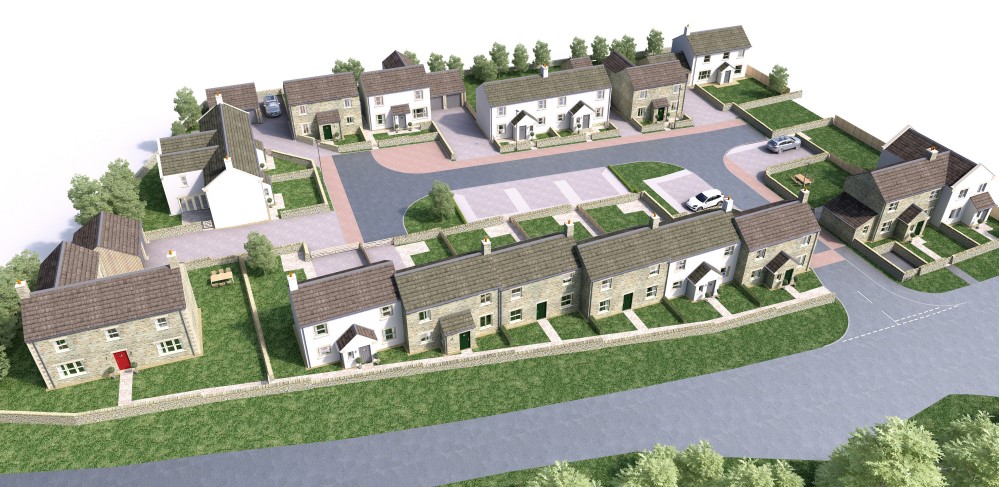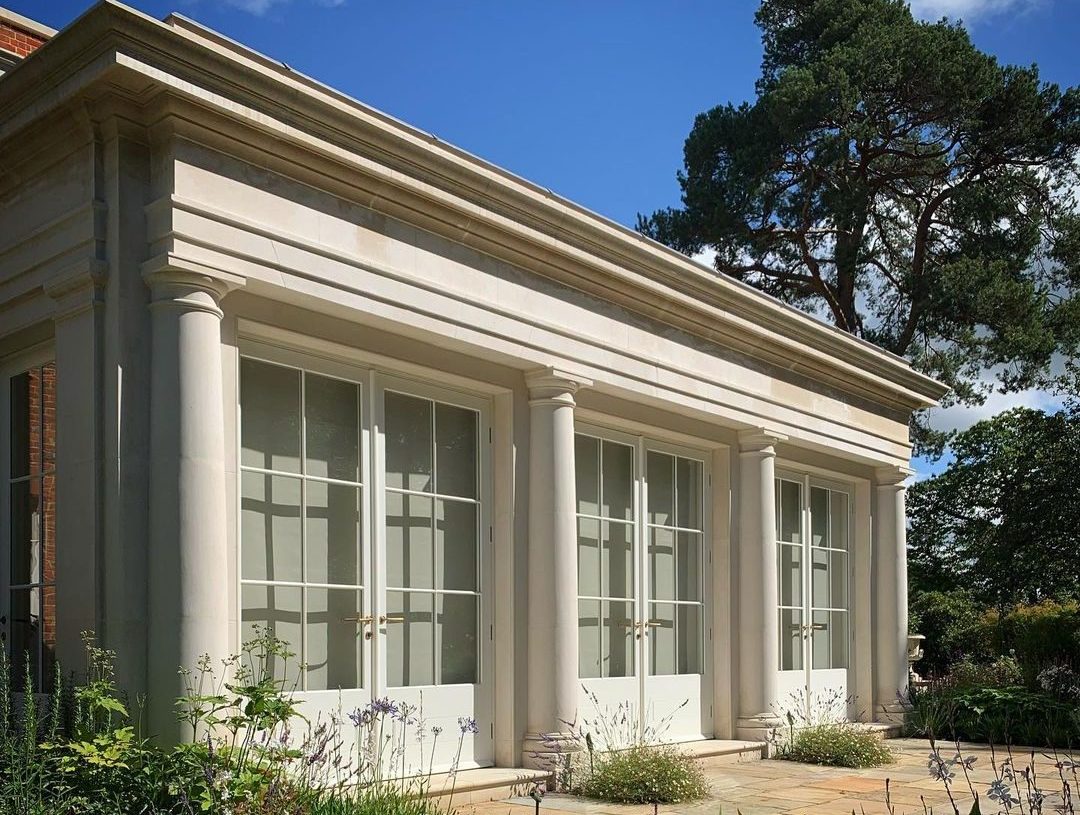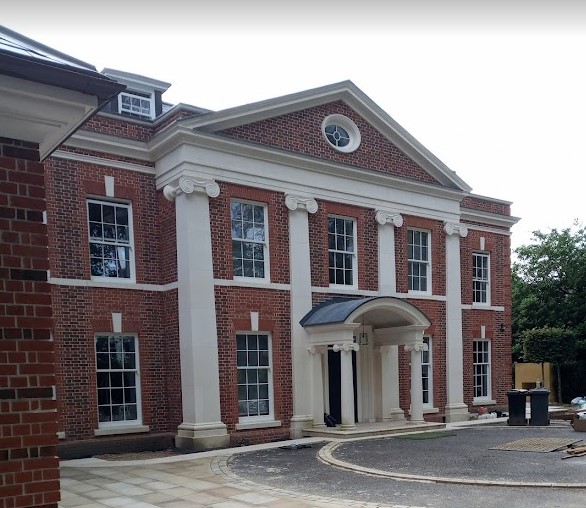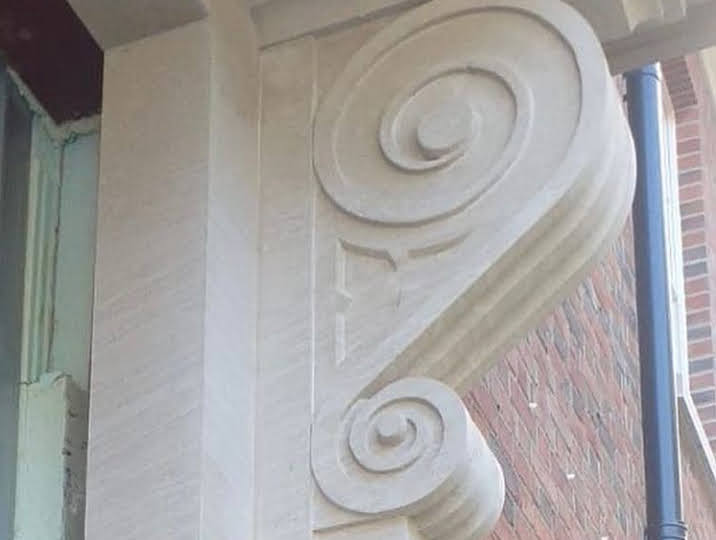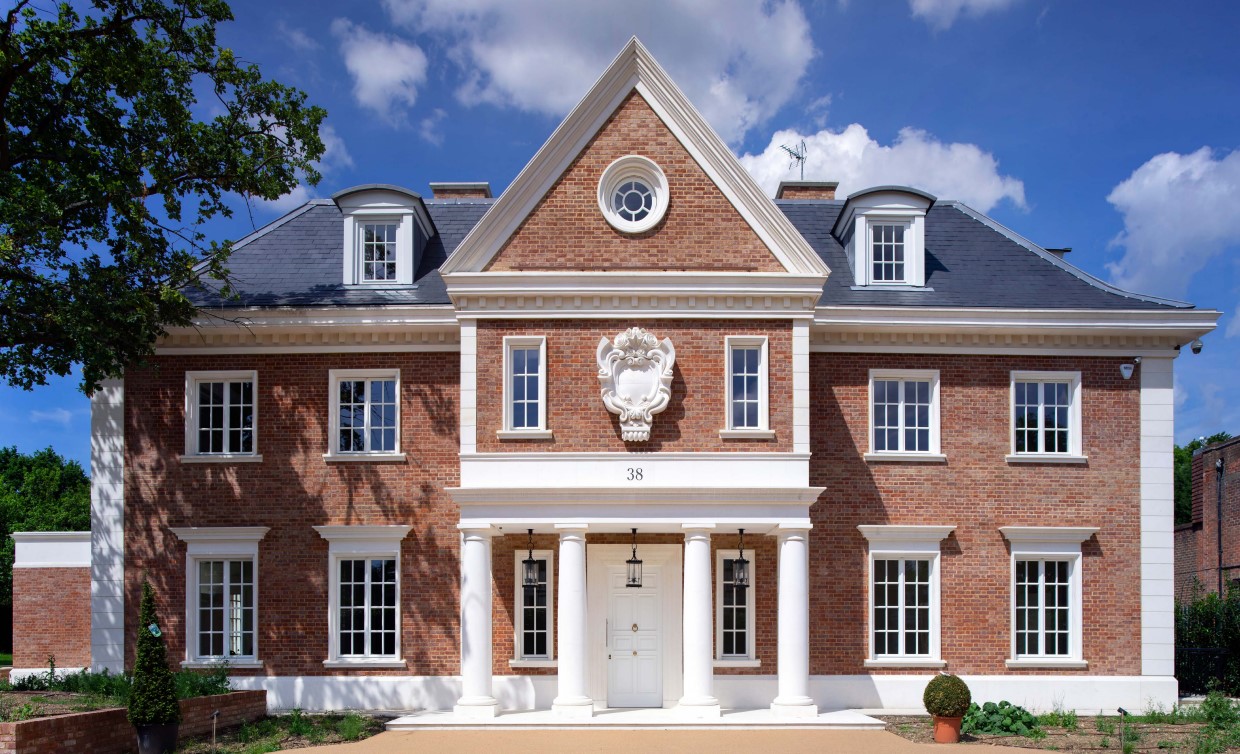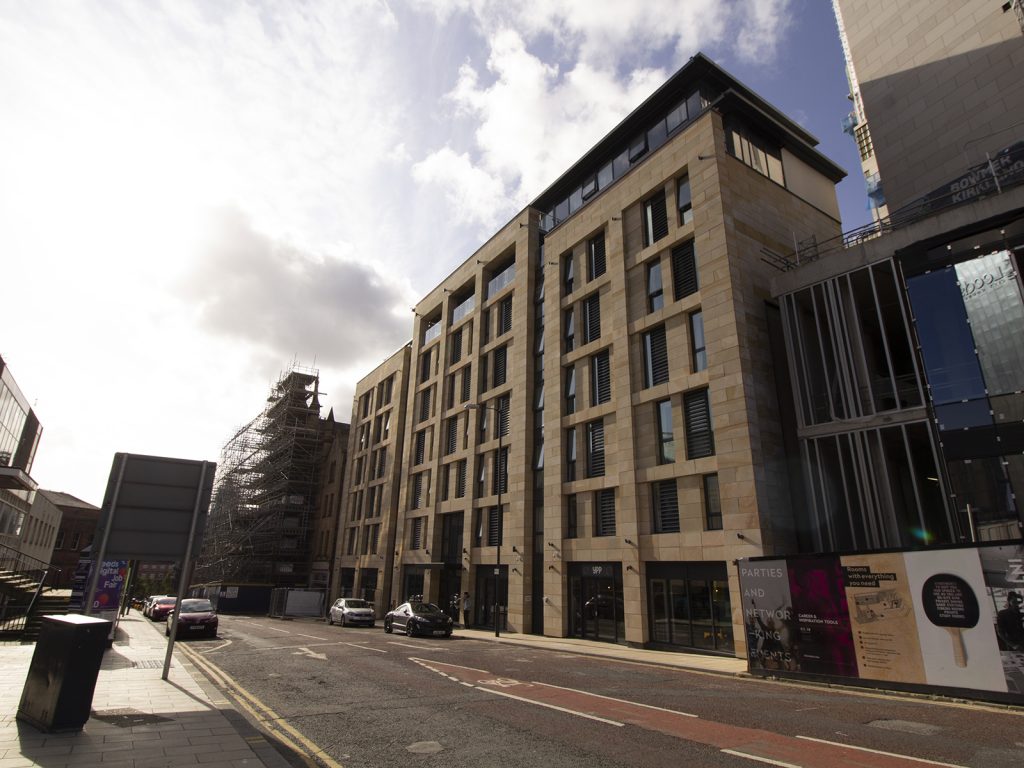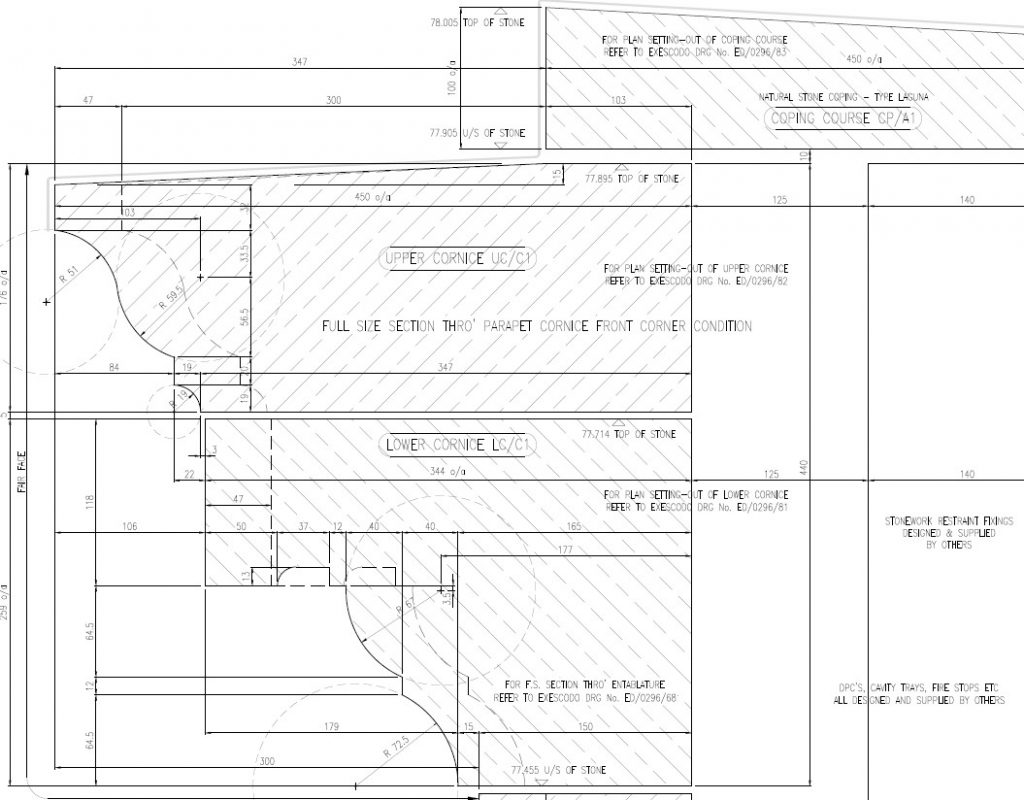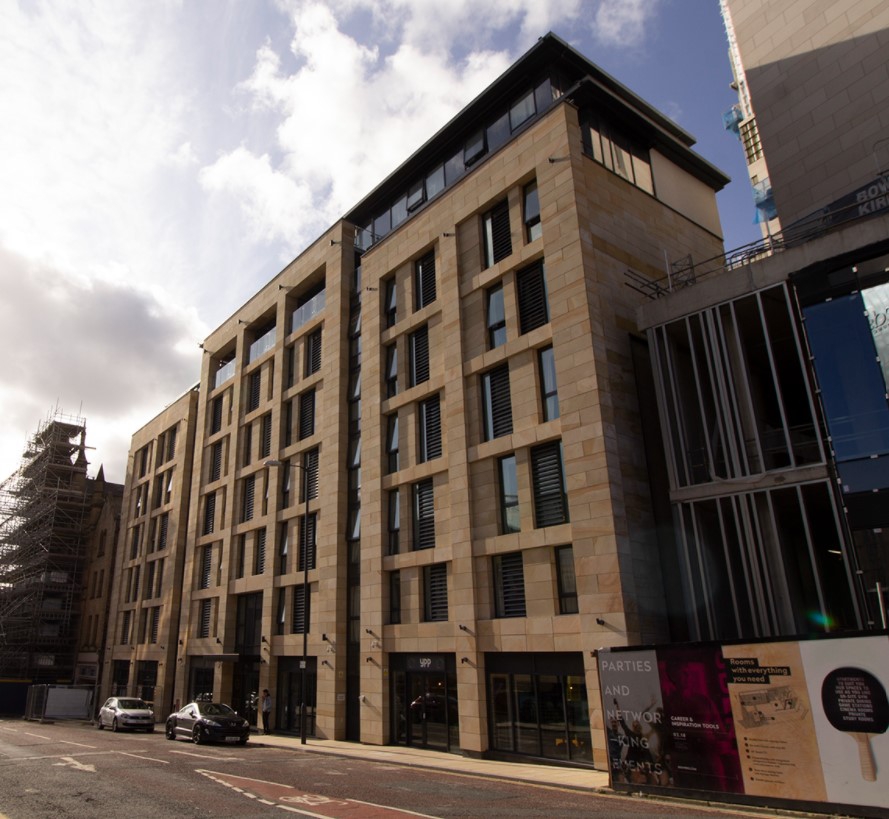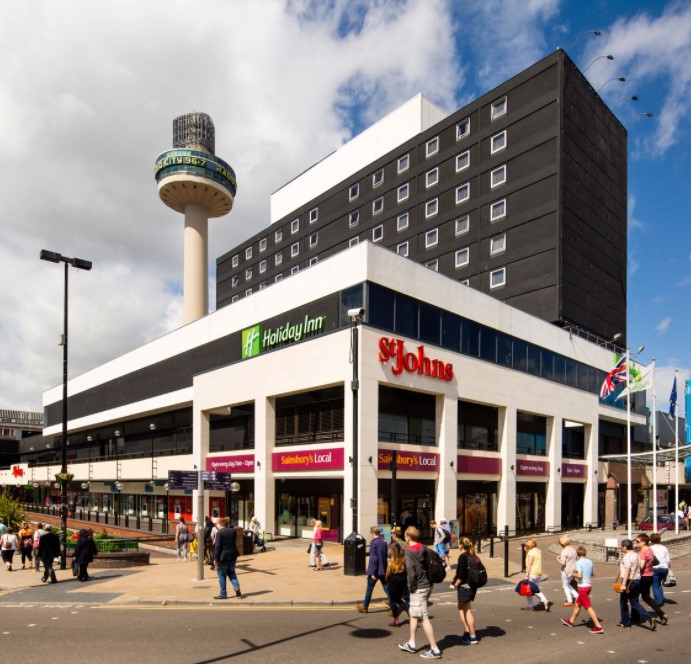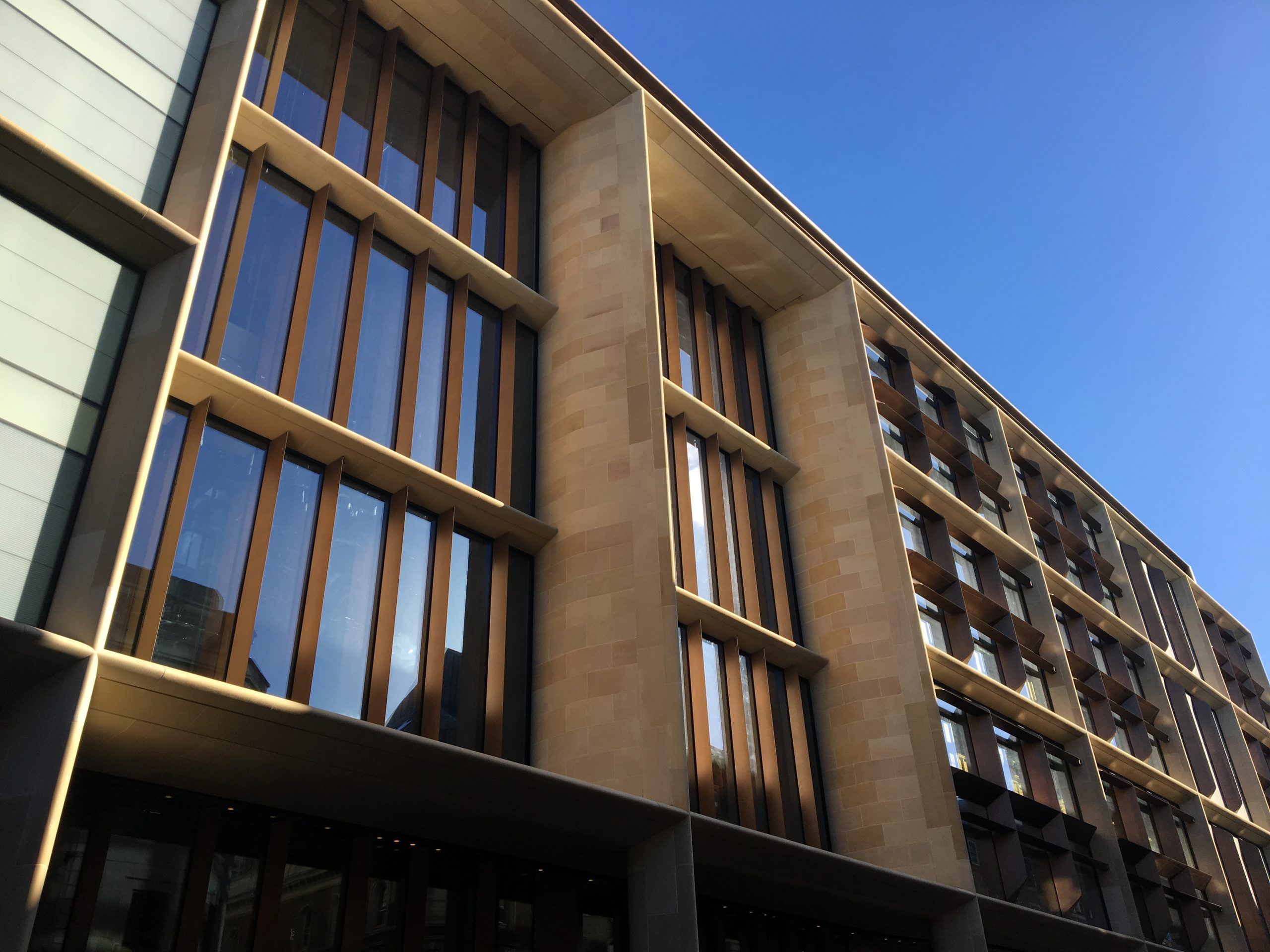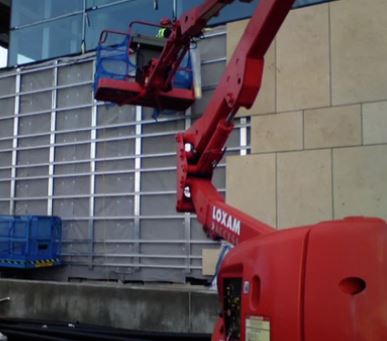Valley Farm Estate – Contemporary Stone Cladding
Nestled within the pristine expanse of the Howardian Hills Area of Outstanding Natural Beauty in North Yorkshire, England, the Valley Farm Estate stands as a contemporary masterpiece that effortlessly marries modern luxury with the timeless allure of the natural world. This £8 million estate has garnered attention not only for its opulent features but also for its exquisite use of stone cladding.
Nature’s Canvas: The Howardian Hills AONB:
The Valley Farm Estate is situated in the Howardian Hills, an Area Of Natural Beauty known for its rolling hills, dense woodlands, and charming villages that collectively form an awe-inspiring natural canvas. Stone cladding becomes a vital component in ensuring that the estate not only stands as a testament to modern luxury but also integrates seamlessly into the breathtaking landscape of the AONB.
The house was commissioned by entrepreneur Julian Pilling who engaged Mark Bramhall of Malton-based Bramhall Blenkharn Leonard architects, along with architect Julian Phillips of The Julian Phillips Partnership to design it.
It is part of a private estate on 65 acres, the home spans over 18,000sq,ft.
The main property has six ensuite bedrooms but there is also an interconnected self-contained three bedroom apartment, as well as a separate building housing a three-bedroom annexe and indoor swimming pool.
The random walling to the lower ground level has all been reused from the previous farmhouse that was on the site. All of the new cladding is Portuguese Limestone, Crema Moca, all manufactured and supplied by API Stone.
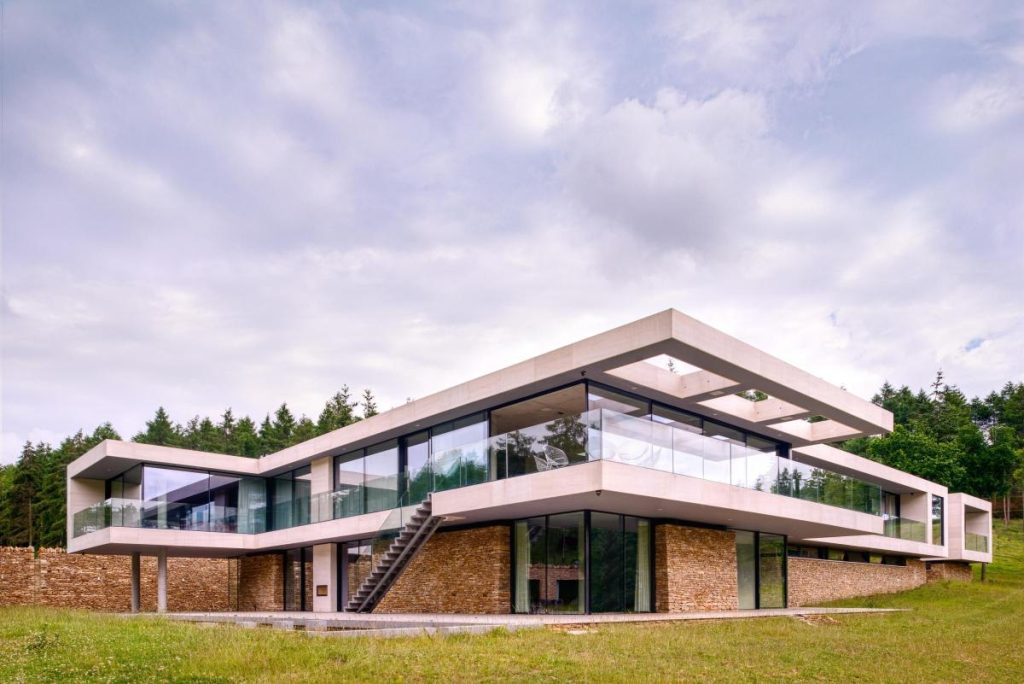
Stone Cladding: The Art of Integration:
Aesthetic Synergy: The choice of stone cladding for the Valley Farm Estate is deliberate, as it allows the structure to blend organically with the local vernacular. The use of natural stone cladding ensures that the residence becomes a part of the landscape rather than an intrusion.
Texture and Tone: The selection of the stone for cladding involves careful consideration of the texture and tone to mimic the hues of the local stone found in the Howardian Hills. This attention to detail ensures that the estate pays homage to its surroundings.
Architectural Versatility: Stone cladding has been used not only as an exterior veneer but also as an interior design element. Feature walls, fireplaces, and architectural accents throughout the residence showcase the versatile applications of stone cladding, adding a touch of rustic elegance to the contemporary design.
Sustainability and Durability: Stone cladding isn’t just an aesthetic choice; it’s also a practical one. The natural stone cladding offers durability, reducing long-term maintenance requirements, while also aligning with the estate’s commitment to sustainable building practices.
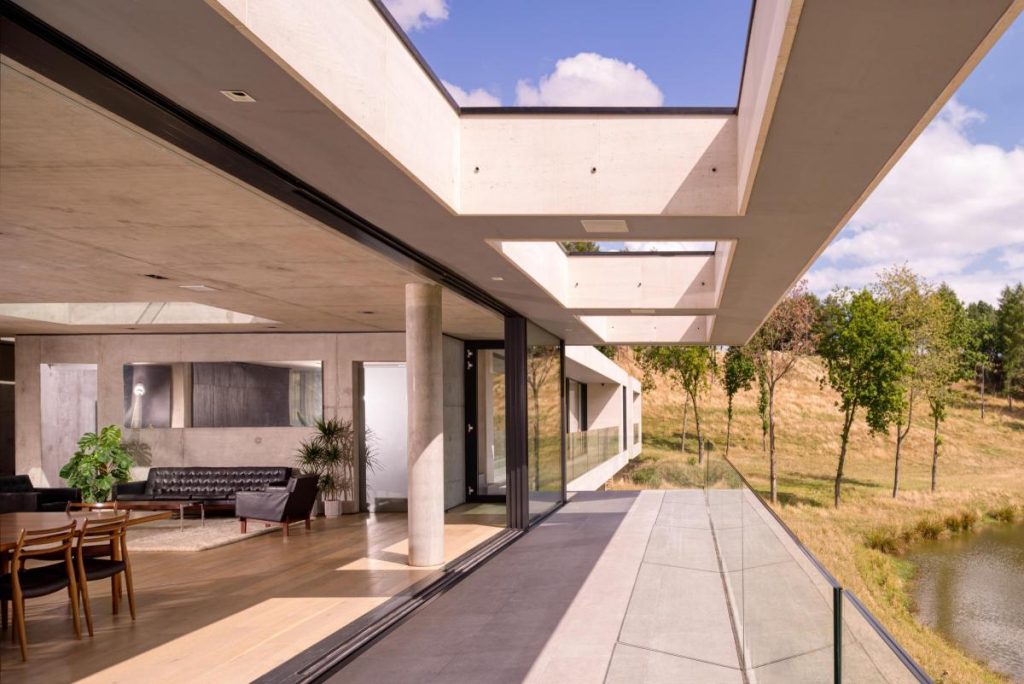
The Valley Farm Estate Experience:
- Seamless Indoor-Outdoor Living: Large stone-clad terraces and outdoor spaces create a seamless transition between the interior and the exterior, allowing residents to fully immerse themselves in the natural beauty of the Howardian Hills.
- Privacy and Tranquility: Stone-clad walls and partitions provide a sense of privacy and tranquility within the estate, enhancing the peaceful experience for its residents.
- Sustainability and Eco-Conscious Living: Beyond aesthetics, stone cladding aligns with the estate’s eco-conscious design principles, reducing the carbon footprint and contributing to its sustainability.
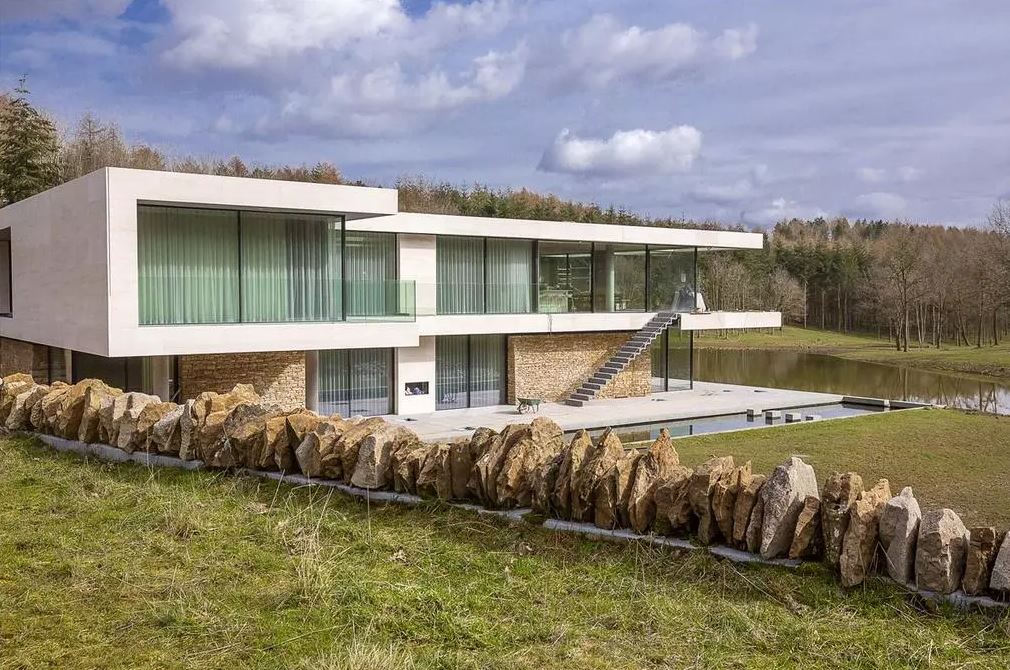
The Valley Farm Estate’s exceptional use of stone cladding exemplifies how modern luxury can coexist harmoniously with the natural world. As stunning residence in the heart of the Howardian Hills AONB, this estate invites residents not only to live in opulence but to also appreciate and connect with the beauty of the surrounding landscape. The use of stone cladding doesn’t just enhance the architectural features; it also enriches the estate’s relationship with its environment. The Valley Farm Estate stands as a testament to the power of stone cladding in uniting contemporary design with the timeless allure of nature.
For more details on stone type options, early costs, and samples please contact our sales manager:
jon.bennett@api-stone.com
Exploring the Timeless Beauty of Natural Stone: A Comprehensive Guide
Introduction:
When it comes to adding elegance and durability to your home or outdoor spaces, natural stone has always been a top choice for homeowners, architects, and designers alike. With its unique patterns, textures, and colours, natural stone possesses an unparalleled charm that can transform any space into a work of art. In this blog post, we will delve into the world of natural stone, exploring its various types, applications, maintenance tips, and the reasons why it continues to be a timeless choice for enhancing the aesthetics of both residential and commercial settings.
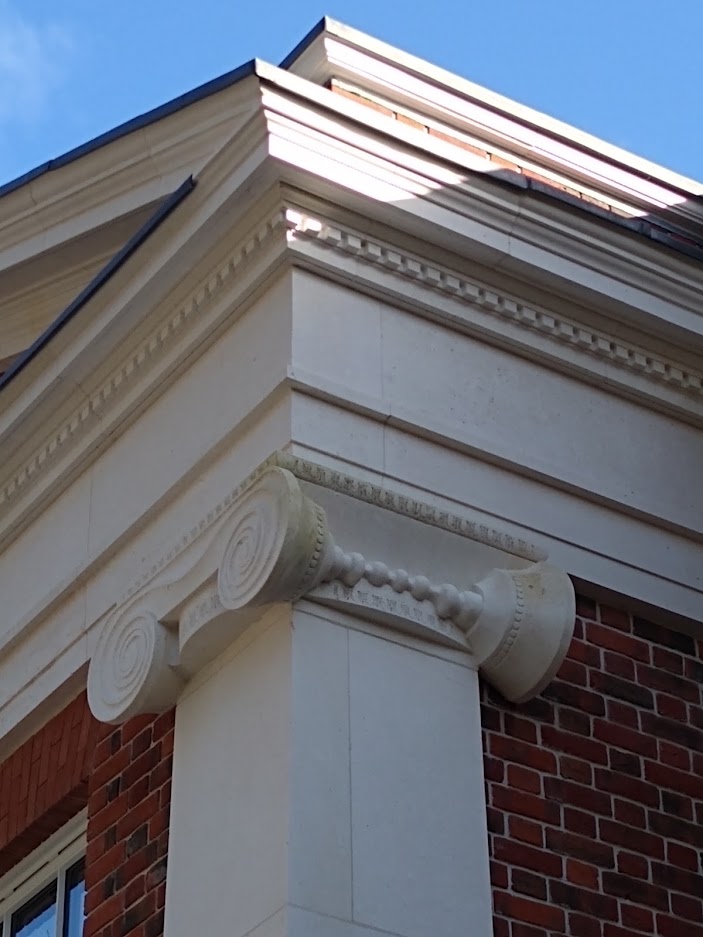
The Many Faces of Natural Stone
At API Stone, we can supply a variety of different natural stone types
Granite: Unyielding Beauty
Limestone: Subtle Warmth and Versatility
Sandstone: Nature’s Artistry
Applications of Natural Stone
Interior Design: Flooring, Countertops, and Accent Walls
Exterior Design: Façades, Walkways, and Pool Decks
Landscaping: Patios, Garden Paths, and Retaining Walls
Fireplaces and Chimneys: Creating a Cozy Ambience
Bathroom and Kitchen: Luxurious Surfaces
Factors to Consider Before Choosing Natural Stone
What specific factors should be considered as you choose what is best for you.
Durability: Resisting Wear and Tear
Porosity: Understanding Absorption Levels
Maintenance: Caring for Your Stone
Cost: Budgeting for Quality
Compatibility: Harmonizing with Existing Décor
Maintaining the Beauty of Natural Stone:
With the stone being a natural product certain expectations around maintenance should be managed.
Cleaning Techniques: Dos and Don’ts
Sealing and Protecting: Preserving the Stone’s Integrity
Stain Removal: Tackling Common Culprits
Polishing and Honing: Restoring the Stone’s Luster
Advantages of Natural Stone:
Timeless Appeal: Adding Lasting Value
Unique Aesthetics: No Two Stones Are Alike
Eco-Friendly Choice: Natural and Sustainable
Increased Property Value: Investment in Luxury
Versatile and Durable: Suitable for Various Settings
Tips for Selecting and Installing Natural Stone:
Consulting with Experts: The Importance of Professional Advice
Samples and Visualizing: Choosing the Right Stone for Your Space
Hiring Skilled Installers: Ensuring Proper Installation
Considering Maintenance Requirements: Long-Term Care
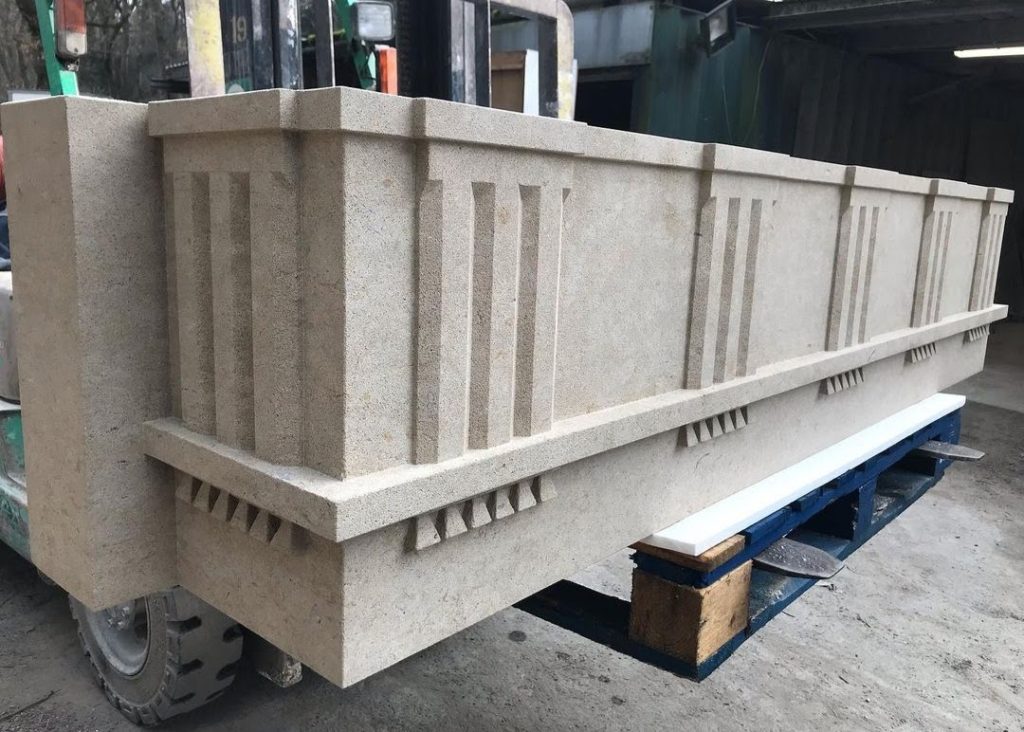
Conclusion:
Natural stone continues to captivate us with its inherent beauty, versatility, and durability. From granite’s strength to marble’s elegance, each type of natural stone offers a unique character that can elevate any interior or exterior space. By understanding the various types of stone, their applications, and how to properly maintain them, you can confidently incorporate natural stone into your design choices, ensuring a timeless and stunning result. Let the allure of natural stone inspire you as you embark on your next home improvement project.
At API Stone we are here to answer any of your questions, we are happy to help out with stone type specification information, samples, early costs, and be available for advice on stone thickness, and anchoring options.
Please contact our sales manager Jon directly.
jon.bennett@api-stone.com
17 Houses in West Witton, North Yorkshire
API Stone supplied the ashlar square faced heads and cills for this North Yorkshire property project. The builder is Hartforth Homes, a small local independent developer with a focus on quality. Described as exclusive homes set in the stunning Yorkshire Dales National Park. All material supplied had to be in accordance with Yorkshire Dales Planning Consent for the scheme. Of the homes for sale eight are available through a sole agent and a further eight have a local occupancy restriction and are only available to eligible parties – all in keeping with national park expectations.
In being involved in early pricing stage API was able to offer a few options on natural sandstone products that would be within consent for planning and also have great value on cost. One of our strengths as a supplier is to be able to tailor our products and services to individual projects and developments.
Hartforth Homes pay attention to detail and source environmentally friendly and energy efficient materials to build with, we are delighted to partner with them for the supply of natural stone to their development schemes.
If you have a project in for planning and you would like to chat through options for stone types, finishes, even more technical things like block parameters, please ask, one of our team will be available to help.
01603 305504
01422 374222
sales@api-stone.com
Why you should choose natural stone for your home’s exterior
When it comes to your home, it’s an investment! But it’s more than an investment in the property itself, it’s also a statement in terms of your personal style. Before people set foot through the door, your home’s exterior aesthetics will provide the very first impression; and one way to ensure the best ‘curb-appearance’ is to introduce natural stone to it’s exterior.
Durability
API Stone sources natural stone from some of the finest quarries around the UK and Europe. Aside from the impressive aesthetic qualities of natural stone, it is also very durable, and low maintenance. Natural stone has a longer expected lifespan than most other construction materials. Unlike other construction products natural stone is also a low maintenance material, for the most part there is little need for any type of external coating and it’s incredibly resistant to cracks, breaks and chips.
Transformative
A common example where natural stone can make a bold statement, is if it is used on the facade of your property. Natural stone can also be added as an additional decorative finish, to give your home a stylish first impression. Little details such as trims, chimneys, pillars and door thresholds can all benefit from the use of natural stone and it offers the perfect final touch to luxurious outdoor entertainment spaces, such as communal fire areas and outdoor seating.
Aside from our natural stone giving your home the distinct feel of grandeur, it also simultaneously allows you to adopt a certain personal style, because natural stone comes in a variety of colours, patterns and veining. As an example our API Portland Limestone offers a clean white look, but can have slight variation in colour because of shells and fossils found within; whilst API Vein Sandstone offers an alternative to the normal single colour, as it has more of a buff beige sandstone shade, with a variety of low amber vein colouring throughout.
Sustainability
One of the biggest advantages of natural stone is that it offers sustainability. Unlike cement, it is a raw product of the earth, that is skilfully reshaped to serve another purpose.
It is a popular choice because:
– Being natural, it contains no harmful chemicals or toxins
– Unlike other construction products, it uses very little water during the process of raw material through to final product
– It uses an energy efficient process, with a low carbon footprint
– Being a raw natural product, the stone relies on no other materials to create it
– There is very little excess waste and any remaining stone is recyclable.
Find out more
If you are interested in introducing natural stone to your property, get in touch with our API Stone team. We work directly with homeowners, architects and contractors and we would be happy to meet with you during early project stages or even later in the process.
Our experienced team will provide an end-to-end service, can work with home owners and developers early on to assist with stone type selection, help with costings, as well as the design and setting out, and project manage the supply and delivery of finished stone to site to your build schedule.
To speak to one of our API Stone professionals, contact us at 01603 305504 or email us at sales@api-stone.com.
Build your dream in 2022 with API Stone
Whether you’re looking to undertake a commercial scheme or start your dream home project, API Stone can help you make it happen in 2022. Here are just a few examples of what we can do, to help you achieve your construction dreams.
Supply
API Stone has been a leading supplier of natural stone in the UK since 2008. During this time, the construction sector has seen many changes and developments, but API Stone has been able to adapt. One aspect of this, is the products we can offer, such as the select sandstone API Beige, a natural sandstone sourced in Northern Spain (which is where we also get the more colourful API Vein).
Other products we can offer, include API Laguna (Spanish White Limestone), API Crema Sanza (Light grey limestone for cladding, masonry and paving) and API Portland (High quality Portland Stone sourced from Dorset.)
The material you choose is very much dependent on what kind of aesthetic you are seeking and the product strength your project requires. We recommend it is worth comparing the different options available on our website, to see what would be best suited to your dream project.
Services
For residential developers, we can provide walling, stock size heads and cills. In addition to this, we also offer a number of project management services.
This includes costings, design draughting – setting out of the stone and all profiles – and advice on anchoring options, whether traditional fix or rainscreen. These things can prove difficult during the planning stage, so letting API Stone be a safe pair of hands for these aspects, will remove needless stress and hassle.
As well as professional masonry, API Stone can also provide cladding and facades and can even add lettering to your final design via sandblasting, rebating and water jet cutting. In addition to this, we can also include your logo, so your brand can literally become a part of the building’s aesthetic!
Working with you
As a property developer, it is crucial for your clients to see quality products are used within your property projects. This can inflate the value of the property and make it more desirable. We can supply you with high quality natural stone and help you implement into the overall design in the most effective way.
On our website contact form, you will see it mentioned that we will “Walk through your project today.” We stand by this, as we invest time in each of our client projects, to learn their exact requirements before making any recommendations.
We have been able to work on some incredible projects such as refurbishing iconic buildings, creating some stylish student accommodation, as well as hotels and private residences.
Our company offers unique value engineering, and we will always adapt what we have to offer to suit our clients, whether they are architects, developers, homeowners or contractors.
So, if you want us involved at the early costing stage or coming in later during the project’s development, API Stone can bring added value. Contact us today and we will go through your project ideas and together we can help make your 2022 construction dreams come true.
Natural stone cladding can revolutionise your development project
Natural stone cladding is the process of applying natural stone as the outer leaf which is to be external to the structure of the building. Natural stone cladding is the perfect exterior solution to improve a property’s weather resistance, thermal insulation or to make it more aesthetically pleasing. Cladding can either be traditional fit at 50mm or 100mm on bed, or a thinner and easily applied rainscreen cladding 30mm or 40mm on bed, all fit on a rail system.
While there are a number of options available, here are a few reasons why we recommend using natural stone for your exterior cladding.
Choose your look
At API, we can offer a variety of different stone types to suit your exterior preferences. One of the major benefits of natural stone cladding is how it can provide a distinct style. For example, limestone allows for a range of colours and shades such as white, grey or cream.
Colour variations
The choice of stone can further add to the variations of colour on offer. For example Portland Basebed is ideal for people who want a very clear free stone, while Laguna works if you want a shelly white with better value.
Pattern and texture
In addition to colours, you can acquire variation in terms of the pattern and veining that comes with using natural stone. It’s these patterns that can help you achieve a specific aesthetic style.
Stone cladding can have numerous finishing textures, ranging from coarse to smooth. Some refer to this in terms of honed or sandblasted, even very worked, like bush hammered. Each texture and finish will provide your project with a completely different look, so it’s worth consulting with our team if you are unsure about the different options.
Better stability
Another advantage is to consider a rainscreen system, where the stone is supplied in thinner, easily manageable panels. In some cases 100mm thick ashlar would be too much to cover a large build, we can supply thinner panels to fit on a rail system, saving on the amount of stone. This would be where rainscreen is best, for example stone panels can be supplied as 30mm thick, where each course is anchored and supported by the rail – enabling much higher structural engineering capabilities.
Durability
Natural stone cladding is relatively easy to install. Once in place, it is highly resistant to any extremes of temperature, especially when applied with the appropriate products.
Why choose API Stone?
When it comes to high end properties (both residential and commercial) you want to be sure you are getting the best possible quality in terms of product and service. As well as sourcing materials from the best quarries, API Stone can also provide project management, offering guidance on what options would be best suited to your project.
We can also provide guidance in terms of costings, something that is crucial when investing in commercial construction. You want an exterior that not only has the right aesthetic quality, but that will also be solid and enduring.
Our cladding can be adjusted to your needs, whether that means a 30mm rain screen or 100mm on bed ashlar. Working in conjunction with a couple of major cladding and façade companies in the UK and Europe, you can rest assured that your project is getting the level of quality that it deserves.
Talk to us
If you are considering a high end property project or commercial development scheme, API Stone can take care of your natural stone requirements. With our team of experienced draughtsmen, expert masons, and project managers, we can be your best stone supply partner. To find out more or to learn more about our range of stone types and anchoring options, please use our website contact form and we will be happy to go over your specifications in more detail to find the ideal cladding solution for you.
Conroy Brook Developments Award
2018 CONROY BROOK DEVELOPMENTS AWARD
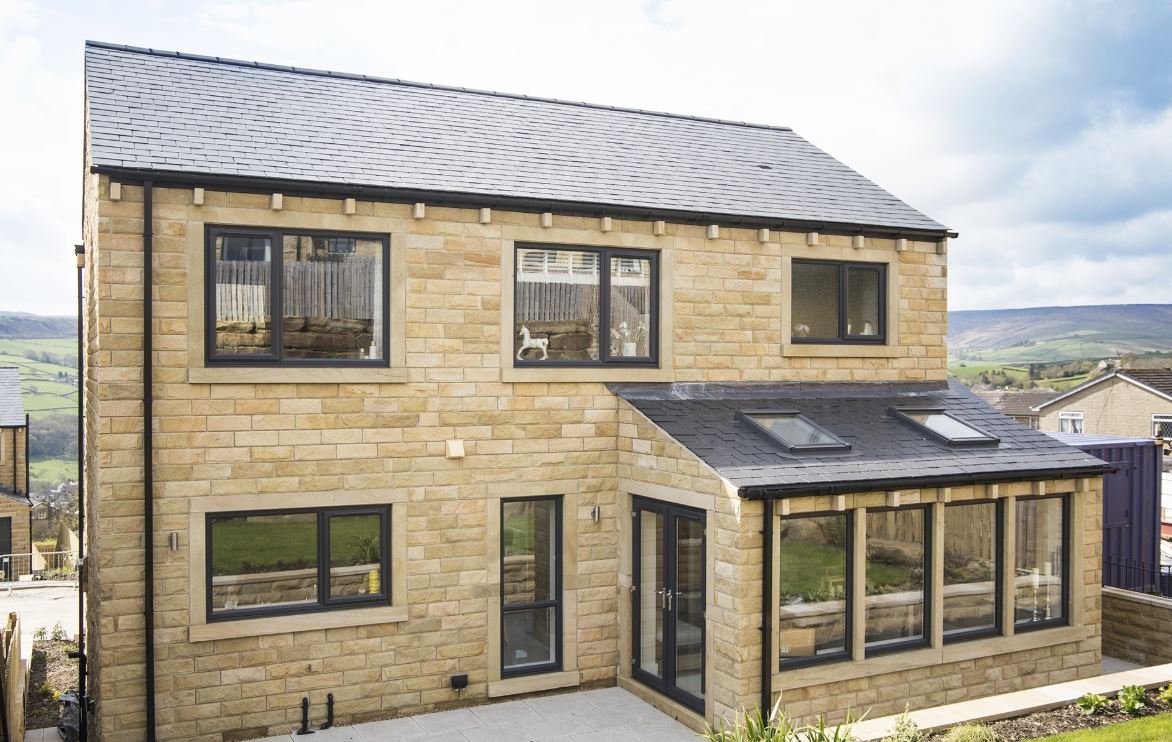 Conroy Brook Developments is one of our longstanding and regular customers. We were delighted to see they have won the residential development of the year award at the Insider Property Awards 2018 for Pennine Gardens, Upperthong. We supplied them with API Beige walling and traditional detailing of heads, cills, mullions, dentils and copings. The whole development creates an image for what API Stone can produce for our clients.
Conroy Brook Developments is one of our longstanding and regular customers. We were delighted to see they have won the residential development of the year award at the Insider Property Awards 2018 for Pennine Gardens, Upperthong. We supplied them with API Beige walling and traditional detailing of heads, cills, mullions, dentils and copings. The whole development creates an image for what API Stone can produce for our clients.
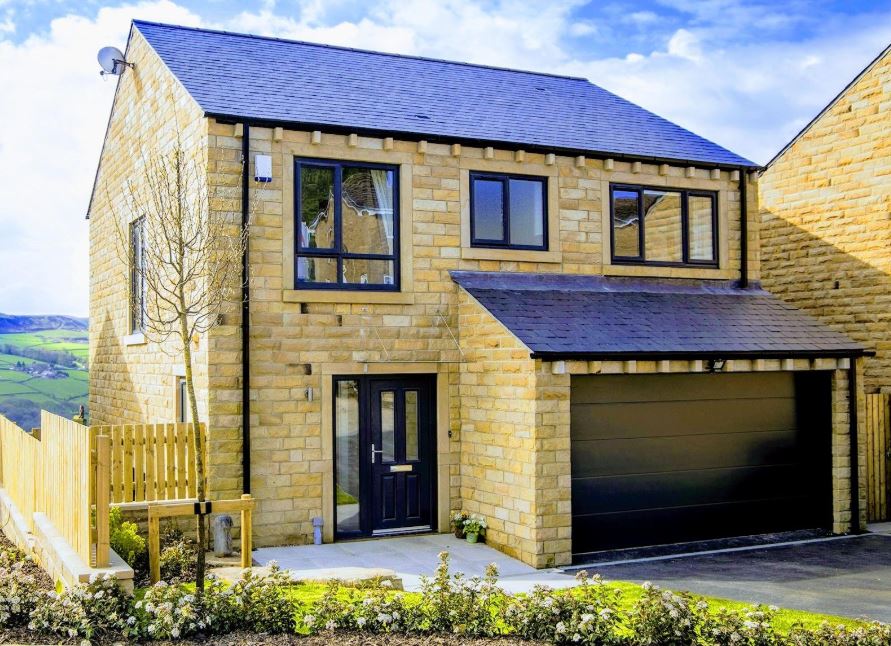
As of November 2018, Conroy Brook Developments has been shortlisted for Builder of the Year Award, with other projects also featuring API Stone supply.
You can visit their site here.
Wentworth Limestone Supply Project – Update
An update on the Wentworth Limestone Supply Project
The Wentworth Estate is one of the UK’s most exclusive private neighbourhoods. It is home to some of the most expensive high end builds in the country.
Estate History
The Estate was established in the 1920’s by W. G. Tarrent, the same builder who developed St George’s Hill in Weybridge. Work stopped during the depression and both world wars therefore the majority of plots were not completed until the 1960’s. Recently most schemes on this estate tend to be a complete knock down and rebuild. Typically in a Neo Georgian aesthetic with grand frontages consisting of brick and stone. Which is becoming more common in renewed developments on existing plots.
This scheme, which is backed on to the famous PGA golf course, has been designed with brick and natural stone. The stone features include large window surrounds, solid L shape quoins at the returns, front and rear classical porticos, extra large two story pilasters, ashlar to the front elevation, large entablature and pediment with cornice and copings. There is also a radius section with radius window surrounds and radius entablature, all finished off with an imposing entrance gateway.

Where did API Stone come in?
The journey for us started Q3 2020 with stone selection and some value engineering to the larger units. The value engineering saw us split into layers to save on block waste. At tender stage we were competing against a selection of other natural stone masons in our high end field. This resulted in us winning the order based on a competitive tender. API secured the supply on the basis of the strongest technical bid with the most developed options on cost saving for the clients.
Limestone Specification
The Portuguese Moleanos is a super hardy limestone with great test data. This stone was selected as a better value alternative to both French and Portland Limestone types. These were the stones which were originally specified at the pre-tender stage. The Moleanos has a grey grain/vein look to it which shows up on cross section cuts, across the quoins, across the cills. This results in a distinctive and recognisable appearance.
As well as supplying the stone, we are completing all the technical stone drawings where ever finite masoned edge has to be given a dimension. These drawings include four full size profiles to the more complex aspects, and cutting sheets for block sizes to the quarry. All API drawings are issued for architects and structural engineers before going into manufacture.

Wentworth Limestone Progress Photos



Project Roles
Stone Type: Portuguese Moleanos Limestone
Architect: Ascot Design
MC: EAB Homes
Stone Subcontractor: Surrey Stone Solutions
Stone Supplier: API Stone
RIBA Sterling Prize Winner
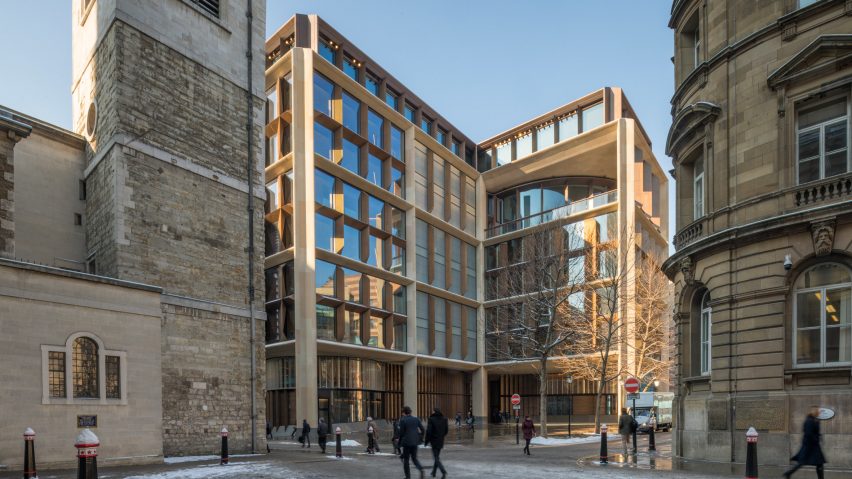 The 2018 RIBA Sterling prize was announced this week, the winner is the Bloomberg Building, by Foster + Partners. Priced at around £1B, it uses 9600 tonnes of the Derbyshire sandstone, Stanton Moor, from Marshalls. The same stone was used over the street on the Victorian court house. Love it or hate it, it is a worthy winner out of this years shortlisted projects. It is the most amount of natural stone used on a central London project in over a century.
The 2018 RIBA Sterling prize was announced this week, the winner is the Bloomberg Building, by Foster + Partners. Priced at around £1B, it uses 9600 tonnes of the Derbyshire sandstone, Stanton Moor, from Marshalls. The same stone was used over the street on the Victorian court house. Love it or hate it, it is a worthy winner out of this years shortlisted projects. It is the most amount of natural stone used on a central London project in over a century.
Under Construction in 2016:
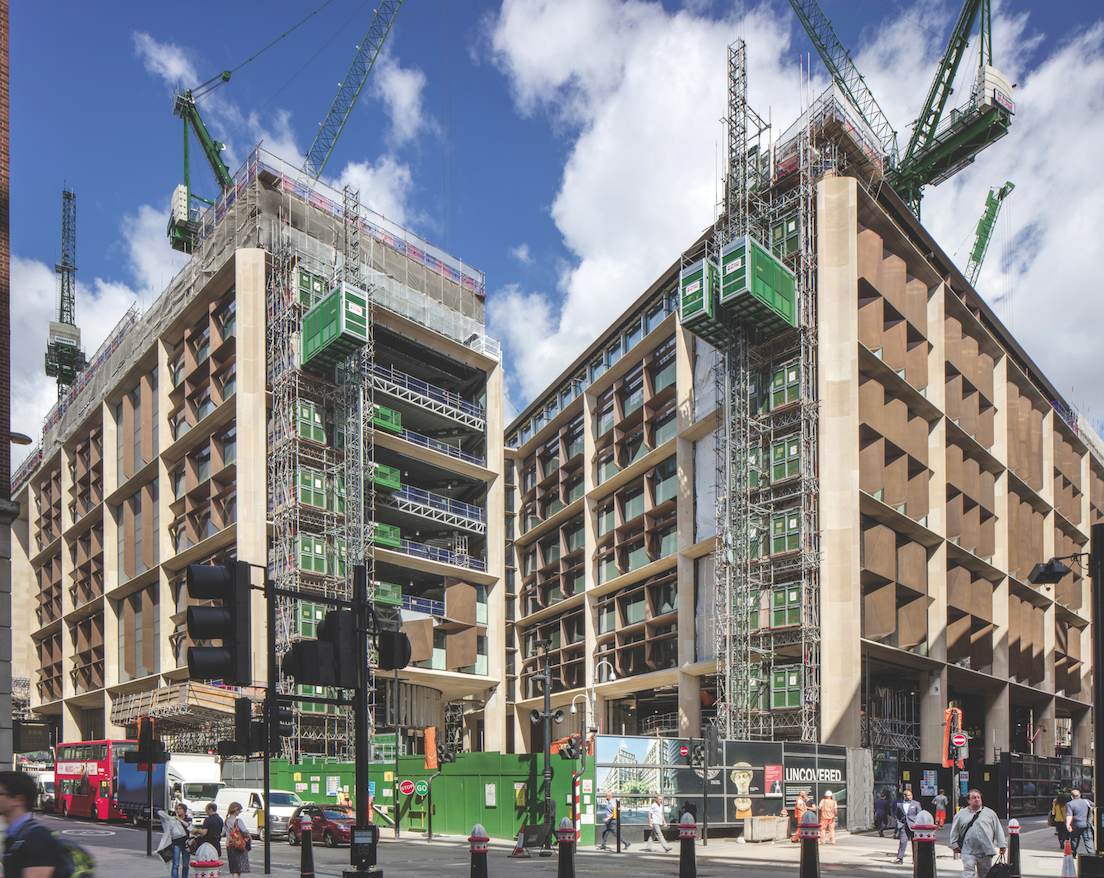
Completed:
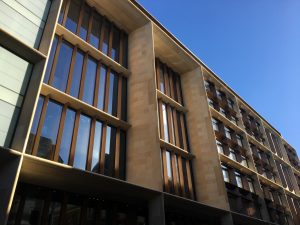
The project has been underway for ten years, and has the highest BREAAM rating for any corporate building in the world at 98.5.
You can hear project lead Michael Jones talk about the design process and the requirement for collaboration in the brief, as well as the old-and-new tension encountered in the natural building products, like the stone and the relocated Roman Temple compared to the more modern high sustainability in the building use.
This is a short video by Architects Journal featuring Micheal Jones of Foster + Partners:
Rear Elevation:

Project Team
Architect: Foster + Partners
Client: Bloomberg
Main contractor: Sir Robert McAlpine
Structural engineer: AKT II
QS: Aecom
Lighting engineer: Tillotson Design Associates
Building services engineer: Sweco
For other shortlisted projects for this years Sterling go to the RIBA website here.
Marshalls quarry the stone out of the ground making the block available. This is where organisations like us come in. API Stone can source Stanton Moor sandstone direct from Marshalls in the form of block by the tonne, and we can cut and dress the stone as required for a project, whether typical handset like the Bloomberg, modern rainscreen, or traditional detailing works. Give us a call and we can go through your project and see what stone type would suit you, cost from drawings and organise samples.
Feel free to fill in our contact form.
Two Main Natural Stone Cladding Types
Stone Cladding Types:
The two main types of anchoring back stone in the construction of large buildings is either: 1) traditional handset (also known as “ashlar”), where the stone pieces are held back by fixings and applied in courses, or: 2) rainscreen, where the stone is positioned on a metal railing system. The design choices for anchoring can be determined by the style and use of the building.
Handset / Ashlar
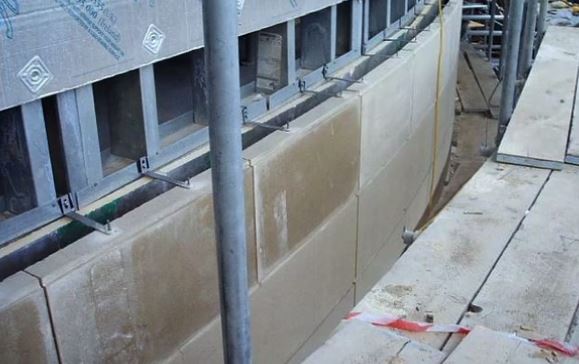
Traditional handfixing the stone is still the most common use in cladding, particularly in the North of England and Scotland. The stone is held back by restraint fixings with horizontal load bearing being situated every floor or every other as determined by a specialist structural engineer. The load bearing fixing can be anchored with a pistol back rebate to the bed of the stone cladding. It takes a specialist fixing team to apply dowel pins to each stone piece anchored to SFS or block substrate.
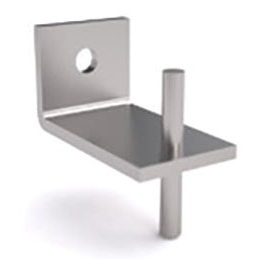 Dowel pins such as the one illustrated here serve to hold back an entire floor level before horizontal is needed. Pin holes are usually drilled on site by the fixing team. The joints between courses can either be left as expansion gaps or filled with a matching stone mortar grout.
Dowel pins such as the one illustrated here serve to hold back an entire floor level before horizontal is needed. Pin holes are usually drilled on site by the fixing team. The joints between courses can either be left as expansion gaps or filled with a matching stone mortar grout.
In estimating cost for a project with handset consideration should be given to supply of the natural stone, cut, dressed and sent to site, and also anchoring pieces and the fixing fee of a specialist stone subcontractor.
Rainscreen
 A natural stone rainscreen system is a means of cladding by which stone panels are supported on a steel or aluminum frame. Such a frame consists of helping hand with vertical supports and horizontal ”T” bar the stone is pinned back by.
A natural stone rainscreen system is a means of cladding by which stone panels are supported on a steel or aluminum frame. Such a frame consists of helping hand with vertical supports and horizontal ”T” bar the stone is pinned back by.
These systems have stronger pull-out load bearing capabilities such that the stone panels can be thinner than their handset equivalents; where handset tends to be 50-100mm thick, rainscreen stone panels tend to be 20-30mm thick.
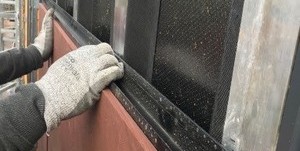
The advantages of the rainscreen are in ease of application and simplicity of loadbearing; each course is independent – compared to handset that needs horizontal supports to each new floor level. The disadvantages of rainscreen is the necessity of procuring the rail, usually at an equivalent to the thinner stone cost, the saving tends to be on the application labour. Handset is still the only way to go for complicated designs with quions or radius features.

